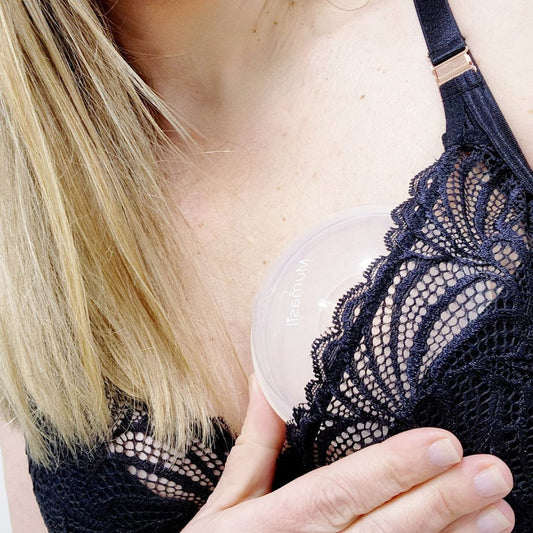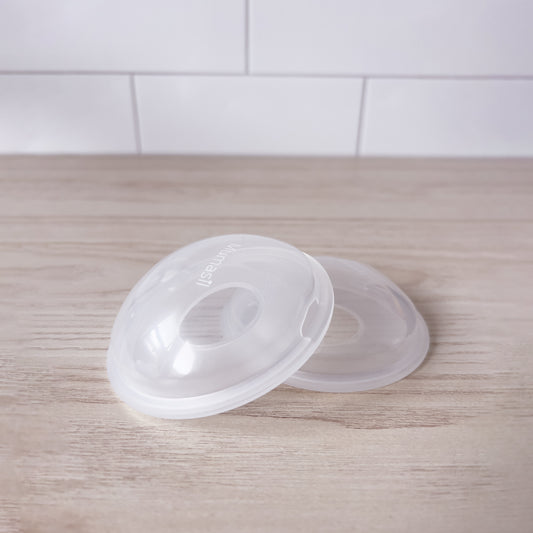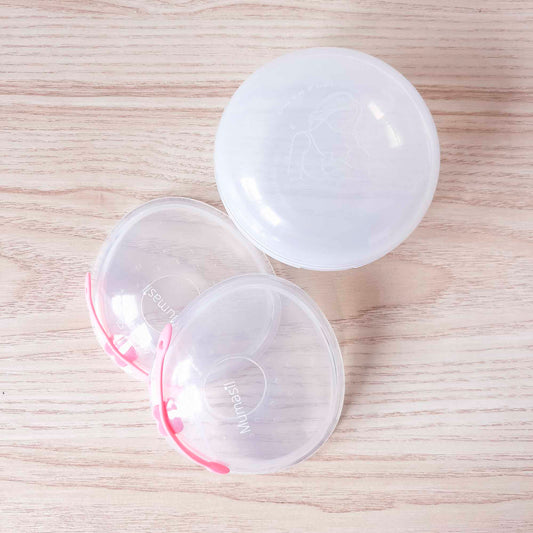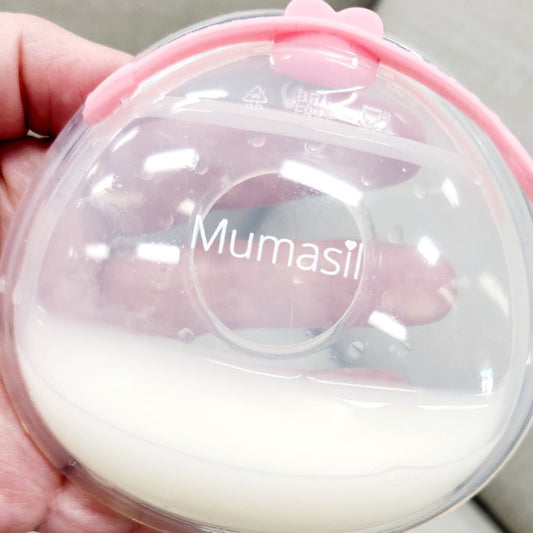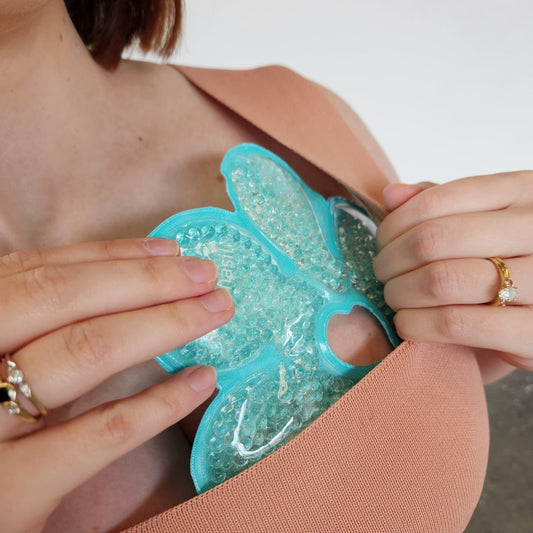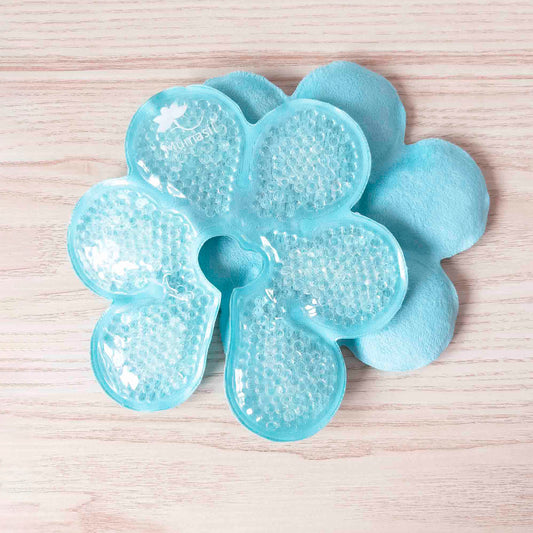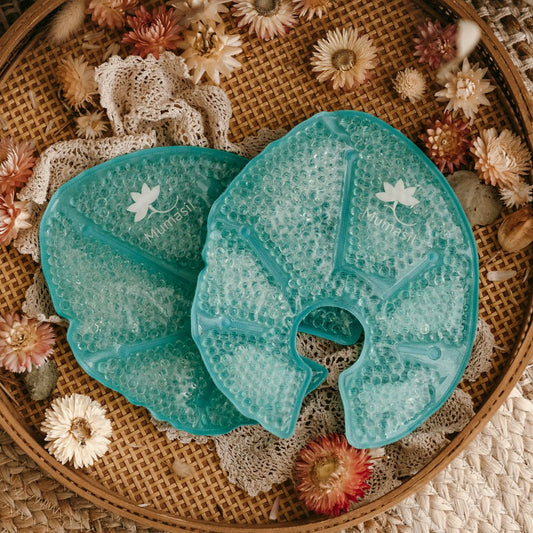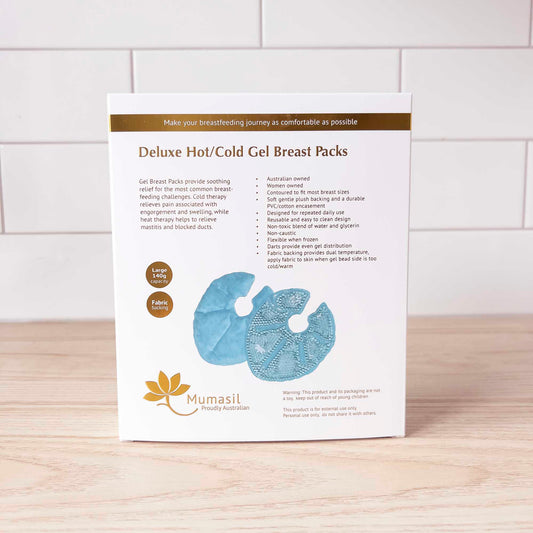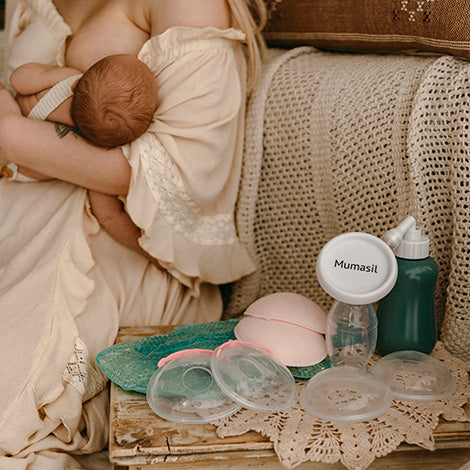Sore and Cracked Nipples
Nursing your baby is supposed to be a relaxing, bonding experience - unless you are anticipating toe-curling pain each time you put your baby to the breast. While nipple soreness is common, it doesn’t need to persist. Here’s what you need to know for comfortable feedings:
You might be sore in the beginning.
Some mothers feel uncomfortable during the first week or so of breastfeeding. The amount of discomfort is hard to quantify - everyone feels pain differently. If the pain subsides during a feeding not lasting more than a half minute or so, your nipple is not misshapen after the baby unlatches, and you have not cracked skin, you probably have what is sometimes called “transient soreness.” This should dissipate as your milk comes in and as you and your baby get better at feeding.
Prevention is the key to comfort.
You may be able to prevent nipple damage by paying close attention to positioning and latch. Make sure you are comfortable and well-supported when you start a feeding. In the early days, this may mean sitting up and using pillows for support. But you don’t need to use any specific posture - some of the most comfortable feedings may be when you are semi-reclining on a sofa or in bed, or when you’re lying down.
You may want to support your breast a little when trying to latch your baby, just for stability. But keep your fingers well back from where baby’s mouth will be so they can get a nice, deep latch. Tickle your baby’s lips with your nipple, and when they open wide bring them quickly to the breast by pressing their shoulder blades toward you (not their head). Baby should be turned toward you with no space between your bodies, and when you look down you should see that their ear, shoulder and hip are aligned. Your baby’s head should be in a neutral or slightly extended position and not flexed at all. If their chin is on their chest, they won’t be able to nurse well and you should reposition them for comfort (usually just by sliding your baby’s body a little so their head tips back).
Is the pain related to baby’s oral anatomy or your breast anatomy?
When baby has a deep latch, their mouth is full of breast tissue and they will not be putting pressure or friction directly on the nipple. If your baby’s latch is shallow, they will be only compressing the nipple and not the areola, too. This can cause not only nipple soreness, but poor milk transfer and slow weight gain, as well.
If your baby is tongue-tied, they may not be able to use their tongue, mouth and jaw appropriately for feedings. You may have significant nipple damage or soreness, and your nipple will typically be misshapen when baby lets go after nursing.
If you nipple is much larger than baby’s mouth, the same can happen. This disproportion will begin to fade as baby grows, though you may have pain in the meantime.
If you have flat nipples, you could potentially experience some pain. The good news is that babies breast feed, not nipple feed. So, if you can get your baby latched with the nipple centred in their mouth along with some areola, the flat nipple shouldn’t make a difference in feeding. Sometimes nipples are flat from fluids or medications during labour or from engorgement as your milk comes in. This is temporary and pain can be lessened by making sure baby’s mouth is wide open when latching.
Inverted nipples – where the nipple completely retracts into the breast tissue and cannot stand erect - may cause more lasting pain as the adhesions stretch or if the skin cannot dry after feedings. Working with a knowledgeable lactation professional can help in these situations.
Is the pain related to engorgement?
If your breast is overly full, it may be difficult for baby to get a deep latch. Frequent feedings are the best intervention for initial engorgement. This swelling should resolve on its own after a couple of days. Some mothers pump or hand express a little before trying to latch baby – this will soften the areola and help the nipple to evert, so baby can latch more deeply. You could try using a manual pump like the Mumasil Silicone Breast Pump to express a small amount of breast milk.
Also related are oversupply and overactive letdown. If your baby is clamping down with their gums to slow the flow of milk, this can cause nipple damage and pain. Your nipple may look creased or compressed when baby lets go. You may notice that your baby chokes, gags or sputters when your milk lets down and may have a love/hate relationship with feeding. You may feel like your breasts are always overly full. Treating the oversupply or overactive letdown may be the first step in getting rid of the nipple pain. Upright positions for baby, removing a bit of milk (with a pump or hand expression) before latching, or using a laid-back position can help baby to better handle the flow of milk so your baby doesn’t need to clamp down on the nipple.
Healing cracked nipples
If you experience cracked nipples, it’s important to work with a healthcare provider experienced in helping breastfeeding women, or with a board certified lactation consultant (IBCLC). Correcting the root issue will keep you from repeated nipple trauma.
Some tips for healing as you’re working on resolving problems include:
- Allow your nipples to air dry after feedings. The Mumasil Breast Milk Collection Shells are great for this. They sit inside your bra and allow you nipples to breath. If you are using breast pads inside your bra, change them often.
- Creams. If you want to use a cream on your nipples, be sure it’s one designed for breastfeeding that doesn’t need to be wiped off before your baby feeds, such as our 100% Natural & Vegan Nipple Balm. Always be sure your hands are clean when applying any cream or ointment to the breast.
- Heat or cold are both comforting. You may find that cooling your nipple with an ice cube right before feeding provides some pain relief. A warm compress after feeding may be soothing.
- Hydrogel pads provides cooling, soothing relief, restoring moisture to accelerate natural healing.
- Start all feedings on the less sore side. If you are too sore to feed on one breast, you might want to “rest the breast” and feed only on the other side, pumping the sore breast to maintain milk supply while the nipple heals.
- Nipple shields are not typically recommended for sore nipples, however if you have soreness from trying to feed with inverted nipples or when baby has a tongue tie the nipple shield is a useful tool.
If you’re having nipple pain when pumping but not when feeding …
You can begin by adjusting the pump suction (it doesn’t need to be up the whole way to be effective). Also, make sure that the flange is properly sized for your nipple. There shouldn’t be much space between the flange wall and your nipple before starting a pumping session (too large) and your nipple shouldn’t rub against the inside of the tunnel when pumping (too small). Some mothers like to lubricate the flange with lanolin or olive oil for comfort.
Possible complications stemming from nipple pain
While most nipple abrasions heal without incident, sometimes the small cracks are enough to let in germs. Bacterial and yeast infections are possible, and these infections can lead to mastitis. In these cases, you will need to work with your healthcare provider to determine the type of infection and to rule out other causes such as eczema or dermatitis. Medication may be necessary, and typically one compatible with breastfeeding can be used so you can continue nursing.
If you are avoiding feeding or pumping because of the discomfort, this can lead to low milk supply. If feeding your baby directly is too uncomfortable, you will want to pump any time you miss a feeding. If pumping hurts too much, hand expression may be the best option. If the pain is so severe that you don’t want to handle your breasts at all, it’s possible (though sometimes difficult) to improve your supply after the nipples have healed. Because milk supply problems are challenging, they can lead to weaning before you - or your baby - were ready. Getting early treatment for any nipple soreness can help you avoid this complication.
The Mumasil Breast Milk Collection Shells are the perfect solution for your sore or cracked nipples. They sit comfortably inside your nursing bra and let your nipples breath which aids in healing time. They also collect the milk that your breasts leak which can be saved for your baby.



